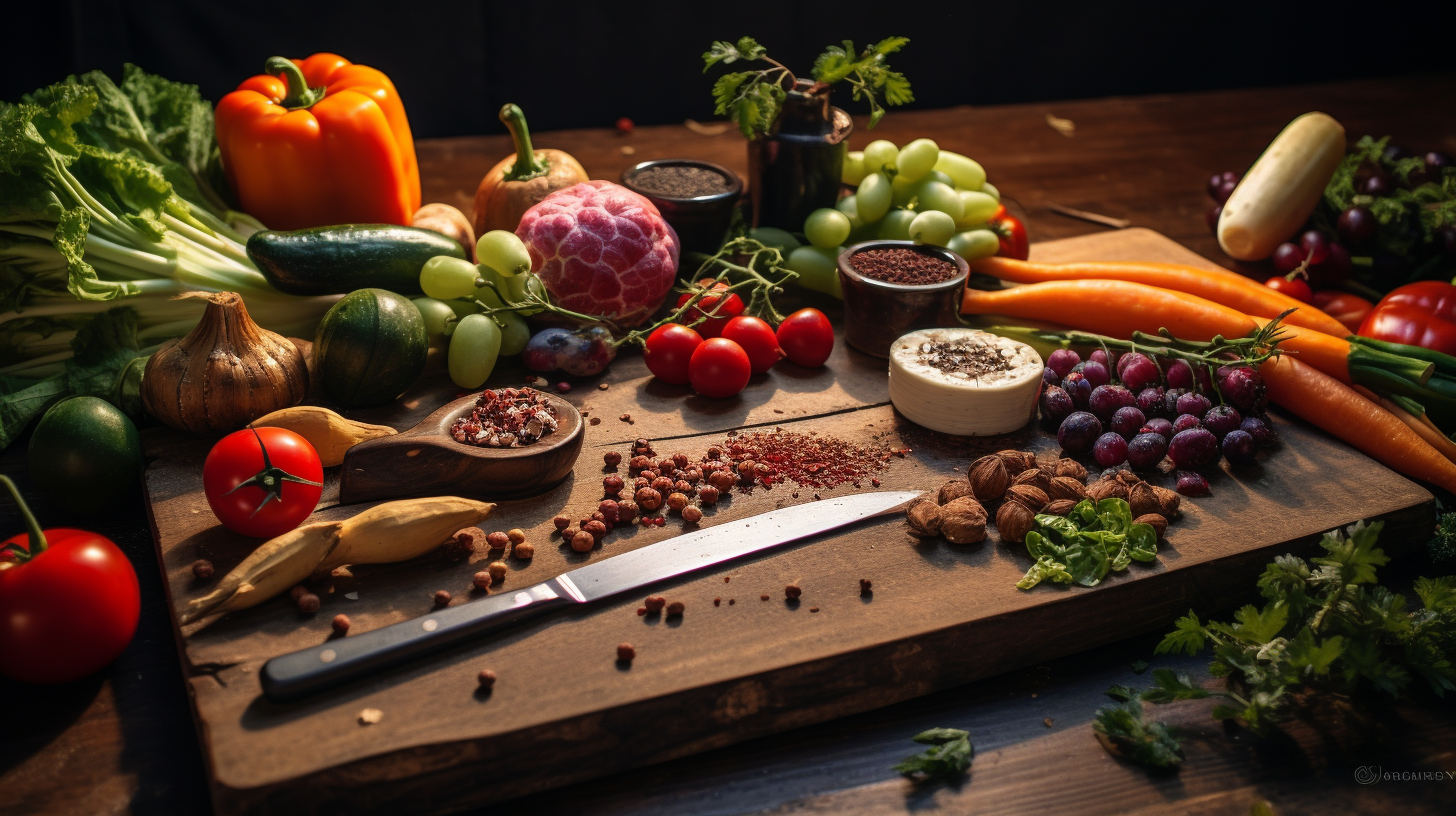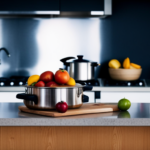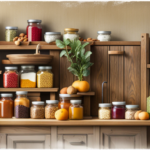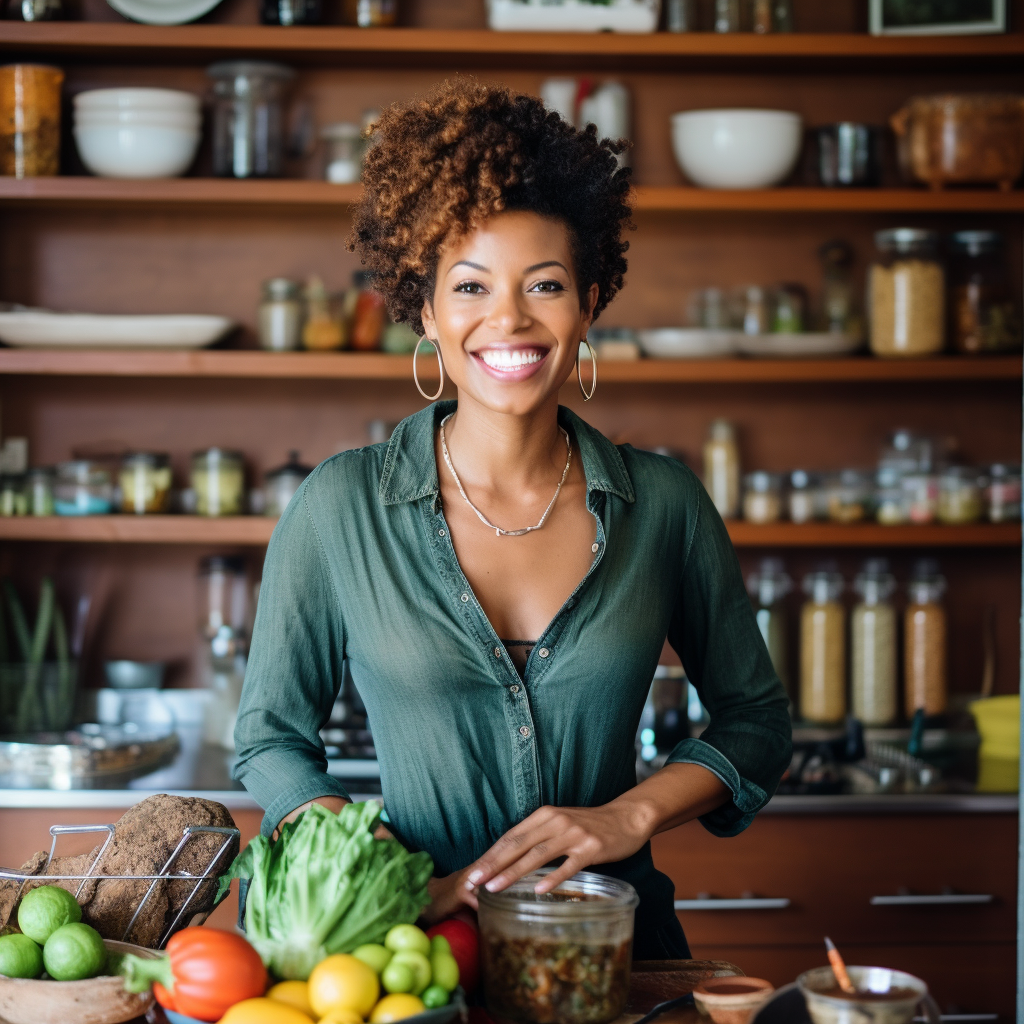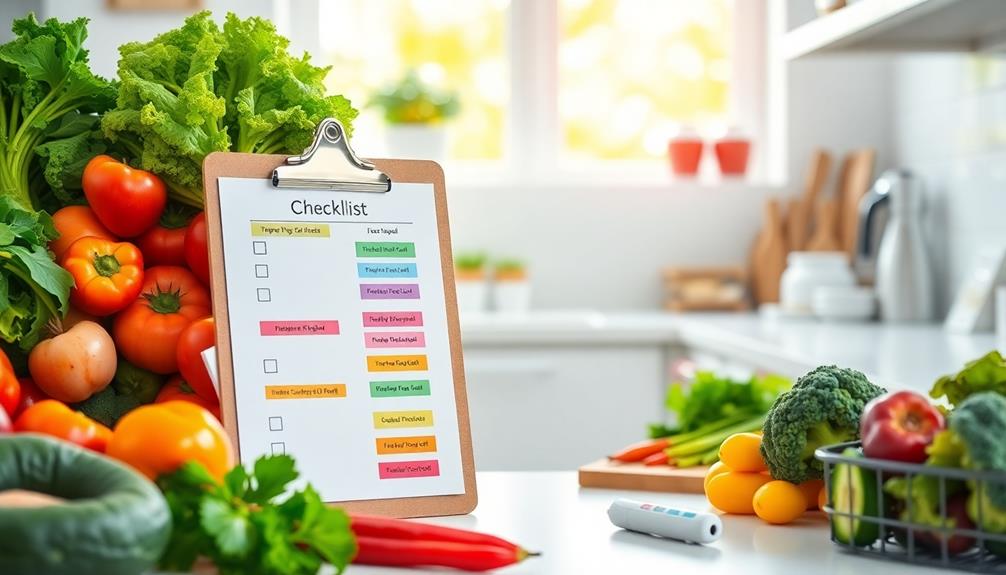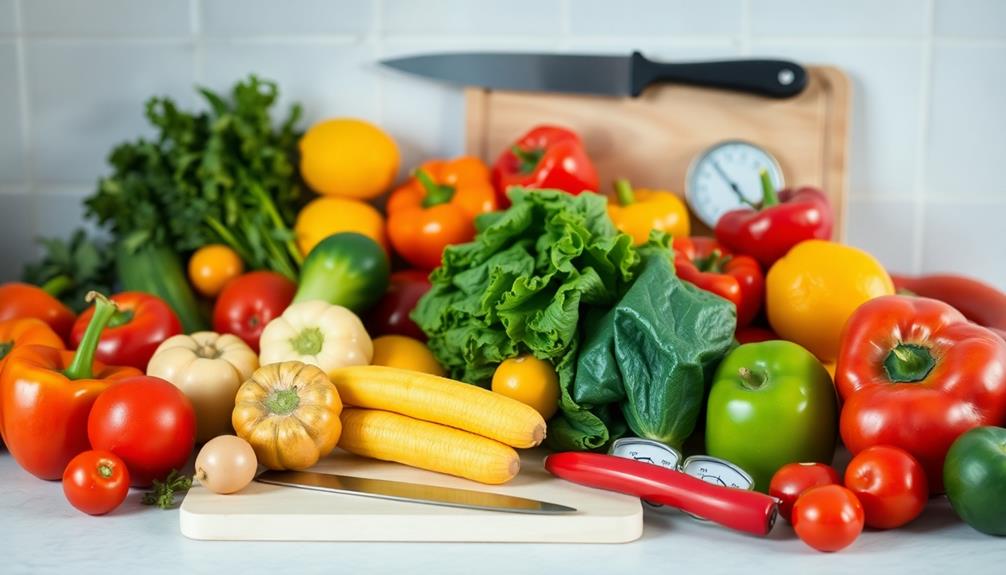As someone knowledgeable in raw food preparation, I recognize the importance of having the essential kitchen tools. Making delicious and nutritious meals with fresh produce requires having a variety of essential utensils.
In this article, I’ll share my top picks for must-have kitchen items that will make prepping your raw dishes easier than ever! From blenders to peelers, there are certain pieces of equipment that every raw food chef should consider adding to their arsenal.
Not only do these items help you create beautiful recipes in no time flat, they also ensure that all ingredients stay intact while preserving their nutritional content. With my list of kitchen basics, you can whip up everything from soups to salads quickly and easily – no matter if you’re an experienced cook or just starting out on your raw food journey!
Blender
When it comes to raw food preparation, there is no single item more essential than the blender. Without this kitchen powerhouse you are essentially lost in a sea of foods that cannot be turned into delicious and nutritious creations!
With its powerful blending techniques, even the toughest ingredients can become smoothie recipes or light sauces with ease. Its versatility knows no bounds: from chopping up fresh fruits into icy concoctions to grinding nuts and seeds for spreads – your options are only limited by your imagination!
But don’t let the power fool you; blenders also provide an incredible level of control when needed. By adjusting settings like speed and pulse control, anyone can achieve perfect results each time. Even novice cooks will find themselves creating masterpieces within minutes thanks to these user-friendly features.
No matter what type of recipe you’re trying to make, having a reliable blender on hand makes life easier for everyone involved. Whether you’re whipping up healthy snacks for yourself or taking on ambitious projects for dinner parties – nothing beats working with a machine so capable yet accessible. And with minimal cleanup required afterwards, it’s hard not to love every second spent at work in the kitchen!
Time now to move onto another indispensable tool in any serious chef’s arsenal; the humble chopping board…
Chopping Board
Now that you have your blender, the next essential kitchen item for raw food preparation is a chopping board.
Chopping boards come in two main varieties – wooden and plastic. Wooden chopping boards are great for cutting vegetables as they provide an even surface to cut on and also help protect knife blades from becoming dulled. On the other hand, plastic boards can be more hygienic since bacteria do not penetrate them easily.
When it comes to food safety, both kinds of chopping boards should be thoroughly washed with warm soapy water after use and stored in a dry area away from direct sunlight.
Here are some tips when selecting which type of board:
-
Wooden
-
Look for wood types such as bamboo or maple which are harder woods than softer ones like pine
-
Make sure the board has been sealed properly
-
Plastic
-
Choose plastic material made from polypropylene (PP) or high density polyethylene (HDPE). These materials are non-porous and resistant to bacterial growth
-
Avoid flexible chopping mats as these may harbour bacteria
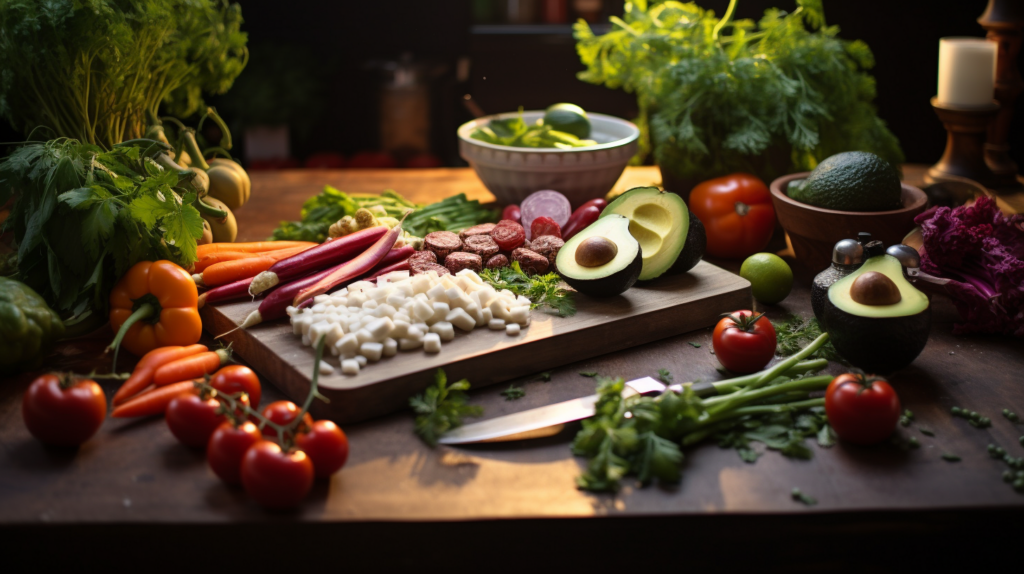
Making sure you choose the right kind of chopping board is key for raw food preparation. The last pieces of equipment needed will be a juice extractor and grater/zester – but we’ll cover those next time!
Juicer
Juicing has become increasingly popular for those looking to detox and reap the benefits of raw food preparation. Making your own cold pressed juice can be a great way to get all the nutrients from fruits and vegetables without having to eat them. Juicers are an essential kitchen tool that make it easy to enjoy fresh juices any time you like!
Many people use juicing as part of their health routine, whether they’re doing short-term juice fasting or just trying to consume more raw foods on a daily basis. With a good quality juicer, you don’t have to worry about losing out on important vitamins and minerals when making your homemade concoctions – instead, you get the full effect of the ingredients right away!
Plus, since most juicers come with multiple settings, you can customize your juices according to what kind of texture you prefer.
If you’re serious about getting into raw food preparation, then investing in a top-of-the-line juicer is definitely worth considering. It may cost more initially but will pay off in terms of convenience and nutrient concentration over time. That being said, there are plenty of affordable options available if you want something that does the job without breaking the bank.
No matter which model you choose, adding a juicer to your kitchen essentials is sure to give your diet an extra boost!
With so many delicious recipes out there waiting for exploration through raw food prep techniques such as juicing, one item that should never be overlooked is a mandoline slicer – the perfect companion for creating nutritious dishes quickly and easily!
Mandoline Slicer
Moving on from the juicer, let’s talk about mandoline slicers. If you’re looking for precision vegetable dicing and slicing techniques, a mandoline is an essential kitchen tool.
It can help you achieve consistent slices with ease, no matter what shape of food you are working with. Plus, if you want to take your culinary skills up a notch by creating fancy julienne strips or even waffle fries – it’s totally doable!
Mandolines come in different shapes and sizes but all feature blades that slice or dice foods at adjustable thicknesses. You also get various attachments so you have more flexibility when preparing raw food dishes.
Some models even come with julienne blade sets which make light work of shredding ingredients into uniform pieces. You can use a mandoline to add flair to salads and side dishes as well as entrées like stir-fries and soups.
So if you’re looking for precise cutting results without spending loads of time prepping veggies – then investing in a good quality mandoline will be worth every penny!
Onwards to spiralizing…
Spiralizer
As a raw food preparation expert, I’m always looking for the best tools to make my recipes as nutritious and delicious as possible. And one of those essential kitchen gadgets is the spiralizer – it’s great for creating unique dishes with all kinds of vegetables!
Spiralizers are super easy to use and they open up a whole range of options when you’re cooking with fresh produce. Plus, they offer some amazing nutritional benefits too; by cutting veggies into thin strands or noodles, you can get more nutrients from them in every bite.
I love experimenting with different raw recipes using my spiralizer. From sweet potato noodles to zucchini ribbons – there’s no limit to what I can create! As well as adding texture and flavor to any dish, spiralizing also helps me cut down on unnecessary carbs without sacrificing taste.
This way, I can enjoy healthy meals that look and feel gourmet.
Using a vegetable peeler might seem like an easier option but trust me, if you want maximum nutrition out of your ingredients then nothing beats a spiralizer! Not only does it work quickly but the finished product looks so much better than something peeled by hand.
So why not give this handy tool a try? Who knows what kind of culinary masterpiece awaits!
Vegetable Peeler
When it comes to kitchen essentials for raw food preparation, there’s nothing quite like a trusty vegetable peeler. It’s an essential tool that will make slicing and dicing vegetables or fruit effortless. Not only is it efficient, but it also ensures your ingredients are as safe as possible when preparing them!
Here’s what you need in order to get the most out of this basic kitchen must-have:
-
A sharp blade – You’ll want something durable so the peeling job is done with precision.
-
An ergonomic grip – This makes using a vegetable peeler more comfortable and easier on your wrist.
-
Multi-functional blades – Look for one that can slice, dice, julienne and even zest fruits & veggies!
-
Protective guard – Make sure any model you buy has a protective guard to keep your fingers from getting sliced up while prepping.
A good quality vegetable peeler is worth its weight in gold when creating delicious recipes for raw food preparation. With these qualities in mind, you’re sure to find one that suits all your needs!
Immersion Blender
An immersion blender is an absolute essential for raw food preparation. It’s a handheld tool that comes with interchangeable blades and attachments which makes it great for blending, pureeing and chopping all kinds of fruits, vegetables and more.
The portability of the immersion blender allows me to take it from one location in my kitchen to another, making it really easy to use wherever I need. Plus, its noise level won’t disrupt the peacefulness of meal prep!
My favorite feature of the immersion blender has got to be how quickly I can whip up sauces or dressings – within minutes! This way I don’t have to worry about having extra ingredients sitting around while they wait to be blended.
With an immersion blender I also don’t have to dirty any additional dishes when pureeing soups or smoothies either. I love using an immersion blender as part of my raw food preparation routine; it helps save time so I can focus on other tasks at hand.
Moving onto the next appliance: a food processor…
Food Processor
I’m a big fan of food processors – they’re such versatile kitchen essentials for raw food preparation! From mini choppers to full-size food processors, there’s a lot of different types available to suit any needs.
But no matter the type, they all have great benefits like increased speed, convenience, and safety. To keep the food processor running optimally, regular maintenance is key. Cleaning the parts after each use, and lubricating the blade regularly, will help extend its lifespan and keep it working properly.
So, if you’re looking for a way to make raw food preparation easier and more efficient, look no further than a food processor!
Types Of Food Processors
I’m so passionate about raw food preparation, and one of the most crucial kitchen essentials is a great food processor. To get the absolute best results from your recipes, you need an electric grinder that can effortlessly chop, blend, mix and puree all kinds of ingredients for delicious dishes!
Food processors come in many shapes and sizes, but some are better suited to different needs than others. For chopping small amounts of vegetables or nuts quickly and efficiently, I recommend looking into a mini chopper like a food chopper. These devices have powerful blades that rotate at high speeds for fast and even cutting. Plus they’re incredibly easy to use – just pop in your ingredients and press start!
If you want something larger scale with more power capabilities, then opt for a full-sized electric grinder instead. This type will give you plenty of slicing options as well as grinders that can handle tougher foods like grains or beans.
No matter which kind of food processor you choose, make sure it has enough capacity to accommodate the amount of ingredients you’ll need for each recipe. With careful selection and regular maintenance, this invaluable tool will be helping you whip up amazing raw meals in no time!
Benefits Of Food Processors
The benefits of having a food processor in your kitchen are undeniable.
Not only is it an invaluable tool for preparing raw meals quickly and easily, but it also helps you get the most out of your ingredients with less effort.
With its quick chopping and blending capabilities, you can extract maximum nutrition from vegetables, nuts, grains and more to create delicious dishes that really pack a nutritional punch!
Plus, because they come in different sizes depending on your needs, you don’t have to worry about storage either – just tuck away the appliance until you need it again!
All these features make owning a food processor an absolute must if you’re serious about getting the best out of raw nutrition.
Maintenance Of Food Processors
Maintaining your food processor is just as important as owning one.
If you want to get the most out of it and make sure all those nutritious ingredients stay safe, there are a few simple cleaning tips and storage solutions that I recommend.
For starters, always remember to clean your food processor after each use to prevent any kind of buildup or contamination. A quick rinse with hot water should do the trick!
Also, when storing, be sure to keep it in an area away from heat so that nothing melts or warps due to high temperatures.
Finally, if you’re dealing with particularly sticky items like honey or peanut butter, consider adding some oil into the mix before blending – this will help minimize mess and make for easier cleanup afterwards!
With these easy steps, you can ensure that your food processor will last for years to come—allowing you to enjoy an abundance of delicious raw meals every day!
Mortar And Pestle
A mortar and pestle is one of the most essential tools for raw food preparation, as it allows you to grind ingredients down into powders or pastes.
There are several different grinding techniques that can be used with a mortar and pestle, from gentle crushing to intense pounding depending on what kind of consistency you’re looking for in your recipe.
When shopping for this tool, there are two main types of mortar and pestles available: stone ones made from marble or granite, which tend to last longer but require more effort to use; and wooden models, which don’t have quite as much longevity but make grinding easier.
Additionally, there are also a variety of shapes and sizes when it comes to pestles, ranging from long spoons to heavy mallets – all designed to help get the job done efficiently.
Using a mortar and pestle correctly requires practice, so take some time experimenting with different materials and techniques until you find the perfect combination that works best for you!
With patience, soon enough you’ll become an expert at using this versatile kitchen tool to bring out the full flavors in any raw dish.
From there, we can move onto other important kitchen essentials like hand graters.
Hand Grater
A hand grater is an essential tool in any raw food preparation kitchen. It can be used to grate vegetables, fruits and even nuts into fine pieces perfect for salads or garnishes. However, there are a few guidelines you should follow when using a hand grater to ensure your safety and the longevity of the product itself.
When it comes to grater safety, always make sure that you keep fingers away from the blades – no matter how confident you feel about your grip! Wear gloves if necessary and use a secure cutting board underneath so that everything remains stable while you work.
For added protection, many people choose to purchase handheld guards which fit over the blades of their graters.
To take care of your hand grater properly, always rinse immediately after use and avoid submerging it in water as this could cause rusting or other damage. If needed, scrub off stubborn residue with a brush but don’t use abrasive pads as they may scratch up the surface.
With proper cleaning and storage techniques, your trusty hand grater will remain sharp enough for all your needs. Moving onto garlic presses…
Garlic Press
Garlic is an essential ingredient in raw food preparation and its importance cannot be overstated. It’s as if garlic were a soldier fighting for the health of your body, defending you from disease with every clove consumed!
To ensure this valiant ally remains at peak effectiveness, let’s look into the best ways to store it and explore some of the incredible benefits it has on our physical well-being.
Garlic storage is simple; just remove any dirt or debris clinging to the outside of each head and place them in a cool, dark location away from direct sunlight where there is good air circulation. This will help preserve flavor and keep it fresher longer – something that absolutely must not be overlooked when preparing raw foods!
As far as its health benefits go, garlic can reduce blood pressure, lower cholesterol levels, improve digestion, boost immunity and even fight off cancer cells – all without ever having been cooked. That being said, it’s no wonder why so many people turn to adding cloves of garlic to their favorite dishes!
As we move forward in our discussion about kitchen essentials for raw food preparation, let us now turn our attention towards what one might consider the sharpest tool in the shed: knife sets.
Knife Set
Moving on from the garlic press, a great kitchen essential for raw food preparation is a knife set. Having sharp knives readily available can make all the difference when prepping your ingredients.
It’s important to invest in good quality knives that won’t lose their edge and need frequent resharpening. You’ll also want to consider storage solutions like magnetic strips or blocks so you always have easy access to them when needed.
When it comes to sharpening techniques, there are many ways to do this – both manual and electric options exist. Manual sharpeners typically involve honing steel rods which help realign blade edges while more advanced electric models use diamond-coated discs that grind off metal particles as well as removing any burrs on the blades’ surface.
To determine what kind of sharpener best suits your needs, think about how often you’ll be using it, as well as its longevity vs cost effectiveness ratio.
With these considerations in mind, now let’s move onto another must-have kitchen tool: citrus squeezers!
Citrus Squeezer
A citrus squeezer is an essential kitchen tool for any raw food preparation enthusiast. It’s a must have item if you are aiming to make the perfect juice or marinade. The convenience of this handy device allows me to quickly and easily separate the pulp from my freshly squeezed lemon, lime, orange, or grapefruit juices.
As an added bonus, many citrus squeezers come with their own integrated zester and/or pulp separator! This makes it easy for me to enjoy all the delicious flavors that fresh citrus has to offer without having to worry about bits of rind in my dish.
Here is a list of features I look for when selecting a good citrus squeezer:
- A sturdy build quality so it will last through daily use
- An ergonomic design that fits comfortably in my hand
- A built-in zester and/or pulp separator
Having these tools on hand gives me assurance that I can always get maximum flavor out of every piece of citrus fruit.
And measuring cups and spoons are just as important when refining recipes – they help ensure accurate measurements each time.
Measuring Cups And Spoons
I’m a big fan of measuring cups and spoons when it comes to preparing raw food recipes.
From liquid measuring cups to dry measuring cups, there’s a variety of sizes and types of measuring cups and spoons to choose from, so you can be sure to get accurate measurements every time.
I especially love the digital measuring cups and spoons that provide you with precise measurements.
And if you want to be extra sure about accuracy, you can always double check your measurements with a kitchen scale.
Types Of Measuring Cups And Spoons
As an experienced raw food preparation expert, I know that having the right measuring cups and spoons is essential.
It’s not just about getting the measurements right – it can also mean the difference between a great dish or one that needs some work!
When choosing your measuring tools, stainless steel is always my first choice for durability and accuracy.
Dry measuring cups are perfect for scooping up dry ingredients like grains, nuts and flours – they usually have clearly marked lines on them so you get accurate measurements every time.
For liquid ingredients like oils or vinegars, opt for liquid measuring cups with spouts to help ensure you don’t spill anything when pouring.
Finally, don’t forget those all-important teaspoons and tablespoons; these should be kept separate from your other utensils as they need more precise measurement than most recipes call for.
With these kitchen essentials in hand, you’ll soon be creating delicious raw dishes with ease!
Accuracy Of Measurement
Accuracy of measurement is essential for successful raw food preparation.
Whether you’re measuring out dry ingredients like nuts and flours, or liquids such as oils and vinegars; precise measurements will help ensure your dish turns out just right!
To get the most accurate readings, I recommend investing in portion control tools like weighing scales to measure out individual portions with precision.
That way, you can be sure that all your dishes are balanced perfectly – no more guesswork involved!
Plus, when it comes to baking recipes – where accuracy is key – having a set of digital kitchen scales on hand makes life a lot easier.
Mixing Bowls
I’m a huge fan of mixing bowls. They are an essential tool for any raw food preparation kitchen, and I highly recommend investing in the best quality you can find.
Mixing bowls come in many different sizes and materials. For raw food prep, I suggest finding ones with large capacity and non-stick coating so that your ingredients don’t stick to the bowl while you mix them together. If possible, try to get stainless steel or glass – they tend to last longer than plastic if well taken care of.
Another great thing about mixing bowls is their versatility – from whisking egg whites to marinating steak, there’s no limit to what you can do with them!
Be sure to check out all the features before picking one up; it’ll save you time and money down the road.
Frequently Asked Questions
What Is The Best Way To Clean Raw Food Preparation Tools?
When it comes to raw food preparation, it’s essential to keep your knives and other tools clean. Sanitizing methods are important for ensuring that you’re not cross-contaminating ingredients.
The best way to do this is by washing all of your knives and surfaces with soap and hot water after each use. Make sure to dry them thoroughly before storing so they don’t rust or develop bacteria.
Use a knife sharpening stone periodically to help maintain the edge on any blades, as well as an oil cloth when storing away kitchen essentials for raw food preparation – this will ensure their long life!
Are There Any Food Preparation Tools That Can Be Used For Multiple Functions?
When it comes to raw food preparation, having the right tools can be like a chef’s secret ingredient. Blending techniques and chopping boards are essential for any aspiring raw foodie looking to up their game in the kitchen.
But if you’re just getting started, investing in multi-functional products is key – they’ll save time and money while helping make sure every meal is cooked with precision. For example, an immersion blender allows you to blend your ingredients directly in the pot or bowl of your choice. And some cutting boards come with an integrated scale – perfect for measuring out exact amounts of each item used.
So don’t let yourself get overwhelmed when stocking up on kitchen essentials; look for those items that will help make multiple meals!
Is It Possible To Prepare Raw Food Without Any Specialized Equipment?
Yes, you can prepare raw food without any specialized equipment; all you need is an understanding of basic knife skills and a willingness to experiment.
With just a sharp kitchen knife in hand, you can create nutritious dishes with fresh fruits and vegetables.
You may also want to consider investing in some items like dehydrators or spiralizers that will expand your options for creating healthy meals.
Ultimately though, the key to successful raw food preparation lies in your ability to use what you already have on hand.
What Is The Best Way To Store Raw Food To Preserve Its Nutritional Value?
Raw diets can be incredibly nutritious and delicious, but if you don’t store your food properly, all of that nutrition could go to waste.
To preserve the nutritional value of raw foods, it’s important to keep them at optimal temperatures and keep them away from moisture.
Keeping fruits and vegetables in their natural state will help retain their vitamins and minerals, while cooked ingredients need to be stored in air-tight containers so they stay fresh longer.
Storing food correctly is key for any successful raw diet!
Are There Any Safety Precautions To Consider When Preparing Raw Food?
When it comes to preparing raw food, safety should always be top of mind.
It’s important to take the necessary sanitization methods to make sure that you’re keeping your kitchen and ingredients free from any potential contaminants or bacteria that could cause harm.
This means washing all fruits and vegetables thoroughly before chopping, using hot soapy water for anything that touches raw meat and fish, as well as properly storing items in airtight containers.
Following these steps will ensure maximum food safety while also providing the highest nutritional value available from the raw ingredients.
What Kitchen Essentials Do I Need to Prepare Raw Zucchini Marinara Pasta?
To prepare a delicious raw zucchini marinara pasta recipe, you will need some kitchen essentials like a spiralizer to create zucchini noodles, a good quality blender to make the marinara sauce, a sharp chef’s knife for slicing vegetables, and a large mixing bowl to toss everything together. Enjoy!
Conclusion
Preparing raw food can be an incredibly rewarding experience. It allows you to connect with the ingredients in a way that is almost magical, like weaving together a beautiful tapestry of flavor and nutrition.
With the right tools and knowledge, anyone can enjoy creating delicious meals from scratch. From simple kitchen knives for cutting vegetables to specialized appliances for dehydrating and grinding grains, having the right equipment will help make your raw food preparation easier than ever before.
So don’t be intimidated – arm yourself with these essential tools and get ready to create some amazing dishes!

